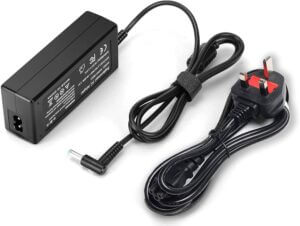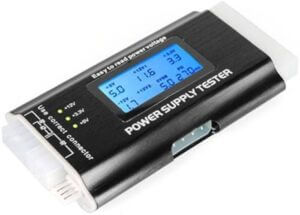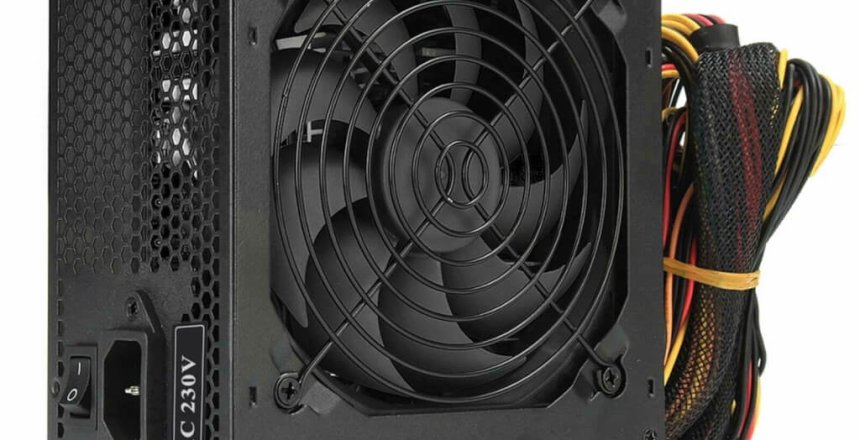The Power Supply Unit or PSU of the computer is something that often requires maintenance, although more often requires replacement. This is an area where laptops have an advantage over desktops, where the power supply is external and can easily be detached and replaced, although introducing the downside of damage to the connectors.

AT and ATX Power Supplies
In the IBM PC and XT, the power switch was located on the side of the power supply which made it more difficult for the user to control their computer and had to leave that area available to switch their computer on and off.
The IBM AT brought the power switch on a cable to the front of the computer case, enabling the user to turn the computer on and off with a simple click. In those days, the monitor was powered through the computer’s power supply using a pass through connection.
In the systems that replaced the IBM AT, known as the ATX power supply, which used a different method of controlling the power supply, the era of sleep.
Instead of switching the mains voltage on and off with a large switch, the user pressed a button and the motherboard simply told the power supply to switch to a higher power mode, and the opposite for switching the computer off, which put the power supply into a low power state.
Modern power supplies are much more energy efficient in the way they function, so instead of using a step-down transformer, it actually uses fast transistors to slice the incoming electricity into the voltages needed using a more complicated circuit.

Desktop power supply
A desktop power supply divides the incoming power (typically 250V) into +3.3V, -3.3v, +5V, +12V and -12V as well as ground at different current values for each device attached.
The older power supplies used a 20 pin connector, but later an additional 4 pins were added, with power supplies offering the 4 pins as an option so they could be connected to a motherboard that only had 20 pins.
In addition two 4 pin connectors are used to provide additional power to the motherboard. Some motherboards only use a single 4 pin connector to provide 2 additional 12V and ground connectors but others require 4 additional 12V and ground connectors.
Later, a 6 pin PCIe power connector was added, and these can be supplied as a single power or as 2 plugs offering 3 or 6 12V and ground pins.
Legacy floppy drive connectors provide +5V, two ground pins and +12V. Molex IDE connectors are larger and provide the same power requirements.
SATA connectors provide +5V, +12V, +3.3V with a ground pin between each.

Laptop power supply
A laptop power supply is simpler in that it only provides one voltage (between 18 and 24 volts but typically 19 or 20V) as the motherboard in a laptop has a series of regulators that reduce the voltage down for each device that needs them.
The connectors on older models were soldered directly to the board, which meant the board had to have the connector replaced occasionally if it got damaged. In most newer laptops, the connector is now connected using a separate cable inside the laptop, so that if it gets broken, the connector can be easily replaced.
Modern laptops now charge using USB-C, where a chip in the laptop asks the power supply to negotiate the voltage for charging automatically. Charging starts at 5V to power the electronics and if charge is required, the chip tells the power supply to provide 20V up to 5A, provided the cable can provide that.

Testing a power supply
The simplest test is an electrical test. Unplug the power cord and plug it back in slowly. As you do so, listen for a crackle. This will be a tiny spark travelling from the pins of the power supply to the socket on the cable. This will rule out the fuse in the plug and whether the computer actually has power.
Indicator lights on a laptop should show the power supply is actually working.
With desktop power supplies there are testers you can connect the power connectors to inside the computer and it will simulate the computer being turned on. The display reads the voltages and the response times of the power supply to turn on.
Replace the power supply if one of the voltage lines is missing or the power supply is recorded as taking too long to switch to the on state.
Note that if you are upgrading your computer, you need to choose a power supply that is 1.5 to 2 times the wattage of the needs of the components of your computer.

